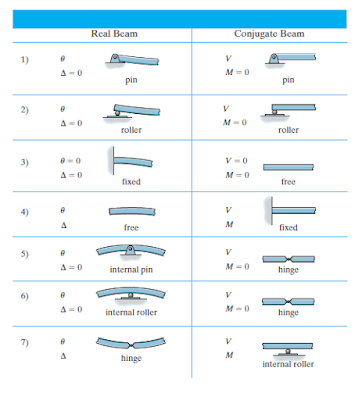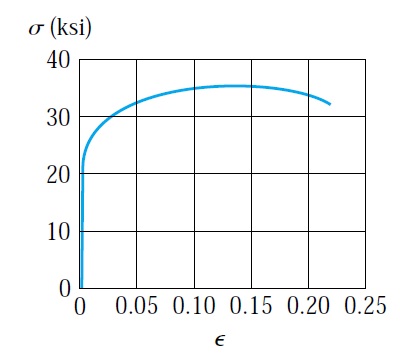Conjugate-Beam method for determination of beam deflection and slope
The Conjugate-Beam method can be used to determine the deflection and slope for beams. In this method, the shear in the conjugate beam at any point will be the real beam slope at this point. While the moment in the conjugate beam will be the displacement of the real beam at the same point. The conjugate-beam will be loaded with M/(EI), where M is the moment derived from the real beam, E is the modulus of elasticity of the beam material. I is the moment of inertia of the beam. When we draw the conjugate beam, we need to pay attention to supports. The support can be different in the conjugate beam compared to the real beam. Table no:1, show the support in the real beam and the corresponding support in the conjugate beam.
After drawing the conjugate beam, we need to determine the moment diagram for the real beam. The conjugate beam will be loaded with the real beam M/EI diagram. after that, we can use the equilibrium equations to calculate the shear and moment at any point, which is equal to slope and displacement in the real beam. To understand this, let solve the following example.
The first step is to draw the conjugate beam. If we go back to
our table, we can notice that the corresponding support for free is fixed and
for fixed is free. Therefore, the support at A will become fixed, and the
support at B will become free in the conjugate beam.
The second step is to determine the loading at the conjugate beam. The load of the conjugate beam will be the real beam M/EI diagram. Therefore, we
should draw the moment diagram for the real beam.
The first step is to determine the unknown force and moment at
support using the equilibrium equation.
Now we can draw the M/EI diagram
So the conjugate beam with the load will be:
now to calculate the displacement at
point A, we need to determine the moment for the conjugate beam at point A.
More examples:

























Comments
Post a Comment